In the culinary tapestry of Vietnam, Vietnamese fried spring rolls, known as “cha gio” or “nem rán,” stand as a crispy and flavorful delicacy, enjoyed across the country and beyond. These delectable rolls, with their golden-brown exteriors and savory fillings, have become an iconic representation of Vietnamese cuisine, tantalizing taste buds and captivating hearts worldwide. Embark on a culinary journey as we delve into the world of Vietnamese fried spring rolls, exploring their history, ingredients, and the techniques that bring them to life.
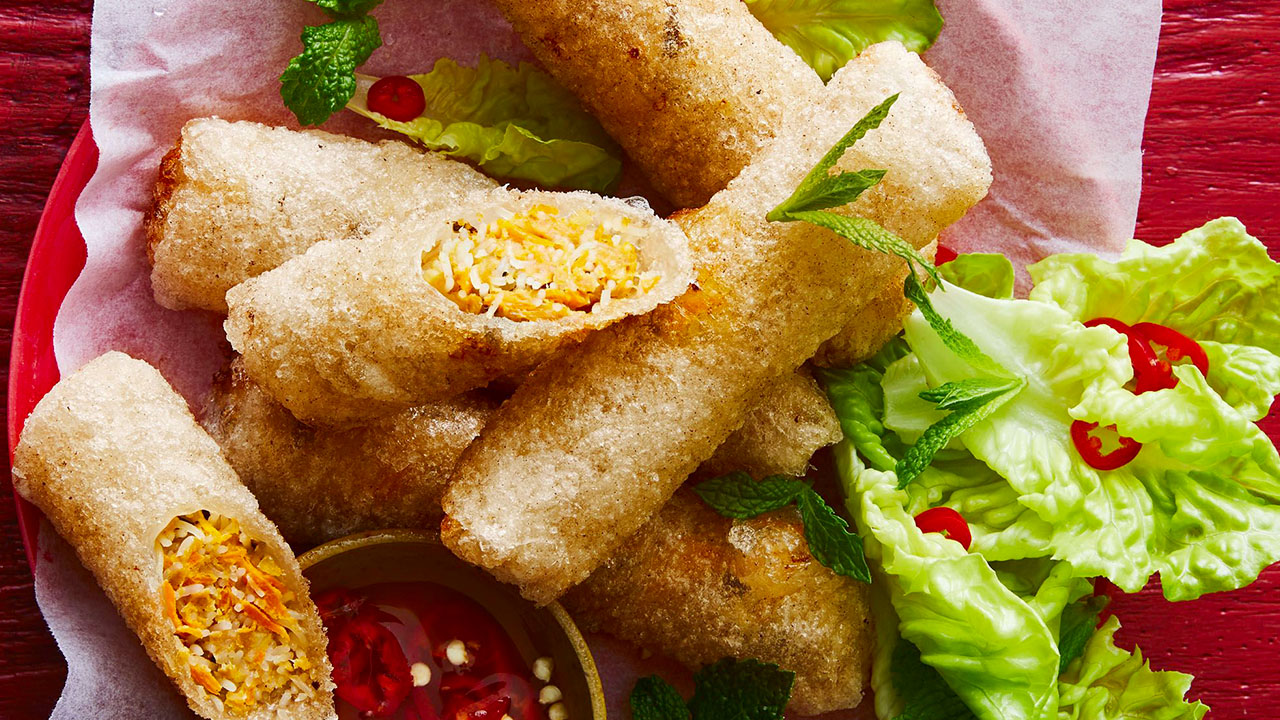
Vietnamese fried spring rolls: A Culinary Legacy
-
Historical Origins and Cultural Significance
Vietnamese fried spring rolls trace their roots back centuries, deeply embedded in Vietnamese culinary traditions. They symbolize prosperity, good luck, and family unity, often served during festivals, Lunar New Year in Vietnam, and family gatherings. Their popularity has transcended borders, becoming a beloved dish in many countries.
-
Culinary Techniques and Influences
Vietnamese fried spring rolls showcase the culinary artistry of Vietnamese cuisine, combining diverse cooking techniques. The art of wrapping, frying, and dipping these rolls reflects a delicate balance of flavors and textures. Influences from Chinese and French cuisines have further enriched the dish’s history and preparation methods.
-
Regional Variations and Unique Flavors
Each region of Vietnam boasts its unique take on Vietnamese fried spring rolls, reflecting local preferences and ingredients. Northern spring rolls typically feature minced pork and wood ear mushrooms, while southern variations often include shrimp and bean sprouts. These variations celebrate the culinary diversity and regional nuances of Vietnamese cuisine.
Essential Ingredients and Preparation Techniques
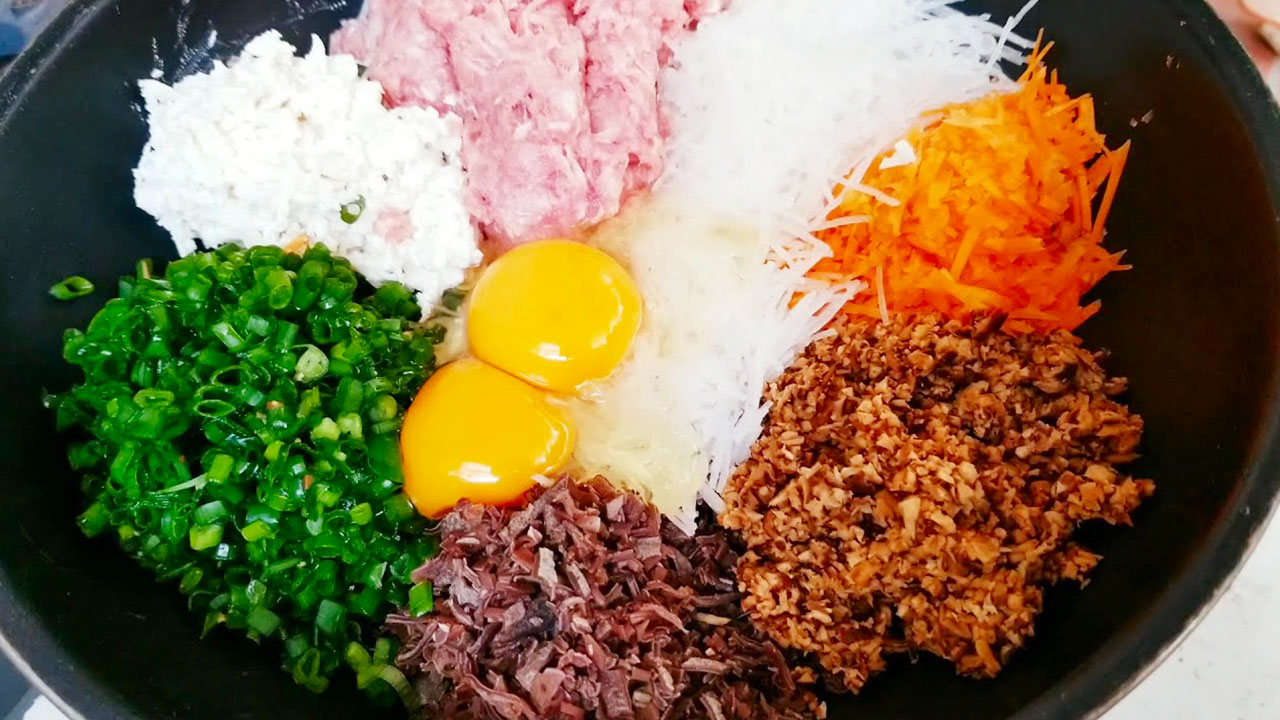
-
Rice Paper Wrappers: A Delicate Foundation
- The foundation of Vietnamese fried spring rolls lies in the delicate rice paper wrappers.
- Made from rice flour and water, these translucent wrappers lend a crispy texture when fried.
- Soaking the wrappers in warm water before use helps soften them for easier rolling.
-
Filling Delights: A Symphony of Flavors
- The fillings of Vietnamese fried spring rolls are a symphony of flavors and textures, commonly featuring a combination of:
- Minced pork or shrimp: Providing a savory base
- Vermicelli noodles: Adding a chewy texture
- Wood ear mushrooms: Offering a distinct umami flavor
- Carrots and onions: Contributing sweetness and crunch
- Seasonings like fish sauce, pepper, and sugar enhance the overall taste.
-
Rolling Techniques: Precision and Patience
- The art of rolling Vietnamese fried spring rolls requires precision and patience.
- The filling is carefully placed in the center of the softened rice paper wrapper.
- The wrapper is then skillfully folded, creating a tightly sealed roll.
- Proper rolling techniques ensure the spring rolls maintain their shape during frying.
Frying Techniques for Crispy Perfection
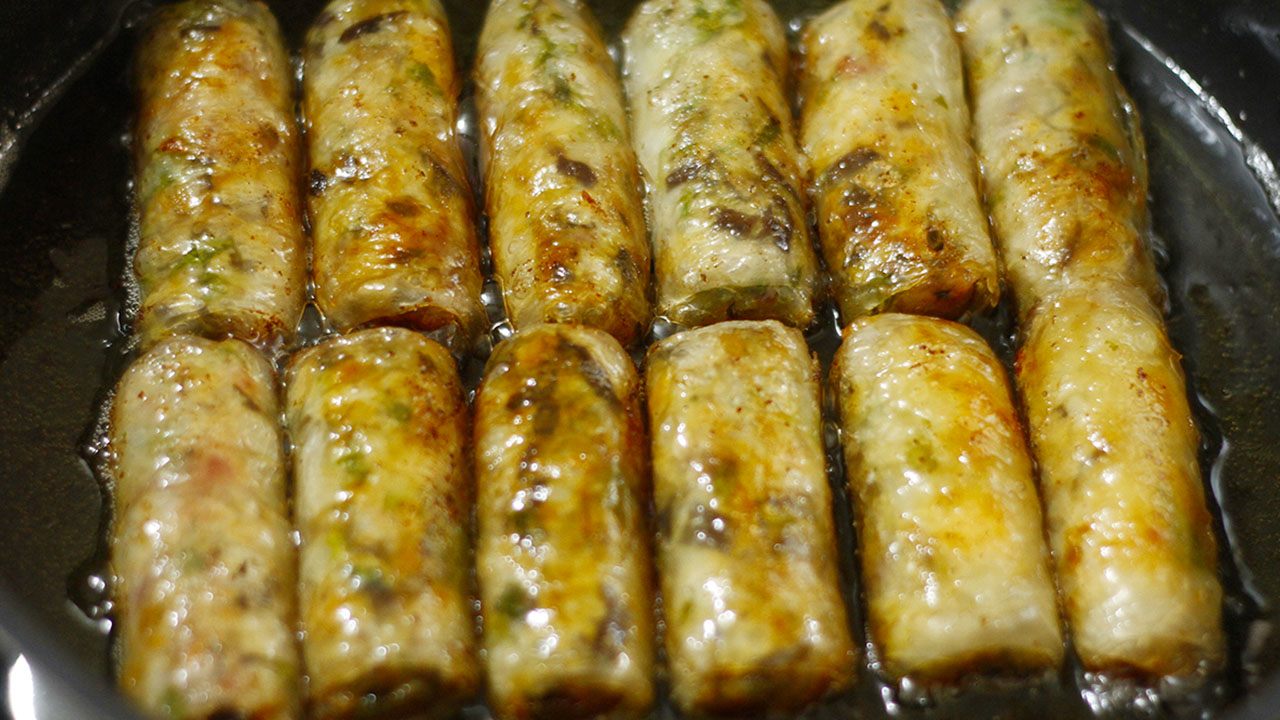
-
Oil Temperature: Achieving Crispy Perfection
- Maintaining the correct oil temperature is crucial for achieving crispy Vietnamese fried spring rolls.
- The ideal temperature ranges between 350°F (175°C) and 375°F (190°C).
- Higher temperatures can burn the spring rolls, while lower temperatures result in soggy rolls.
-
Frying Techniques: Single or Double
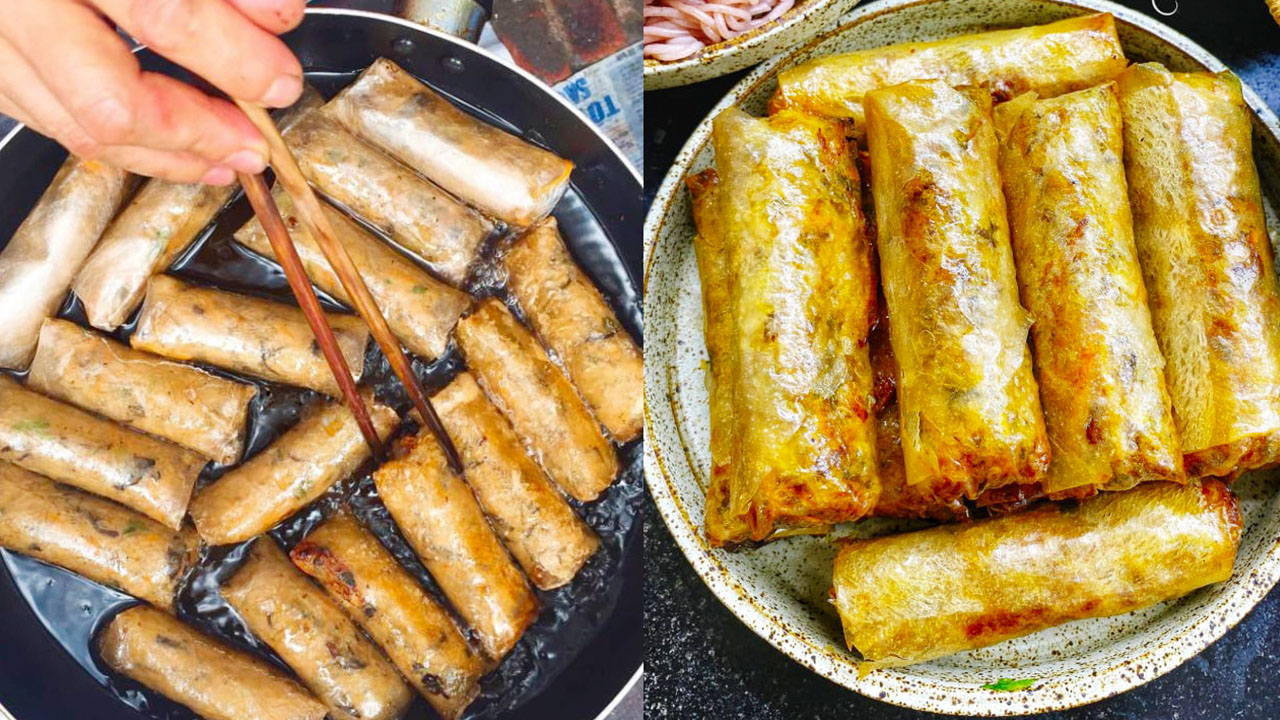
- Vietnamese fried spring rolls can be fried using single or double frying methods, each yielding unique results.
- Single frying involves immersing the rolls directly into hot oil until golden brown.
- Double frying involves frying the rolls twice: first at a lower temperature to cook the filling and then at a higher temperature to crisp the exterior.
-
Achieving the Perfect Crispiness
- To achieve the perfect crispiness, fry the Hanoi spring rolls in small batches to avoid overcrowding the pan.
- Use a slotted spoon to gently turn the rolls during frying, ensuring even cooking.
- Drain the spring rolls on paper towels to remove excess oil before serving.
Accompaniments and Serving Suggestions
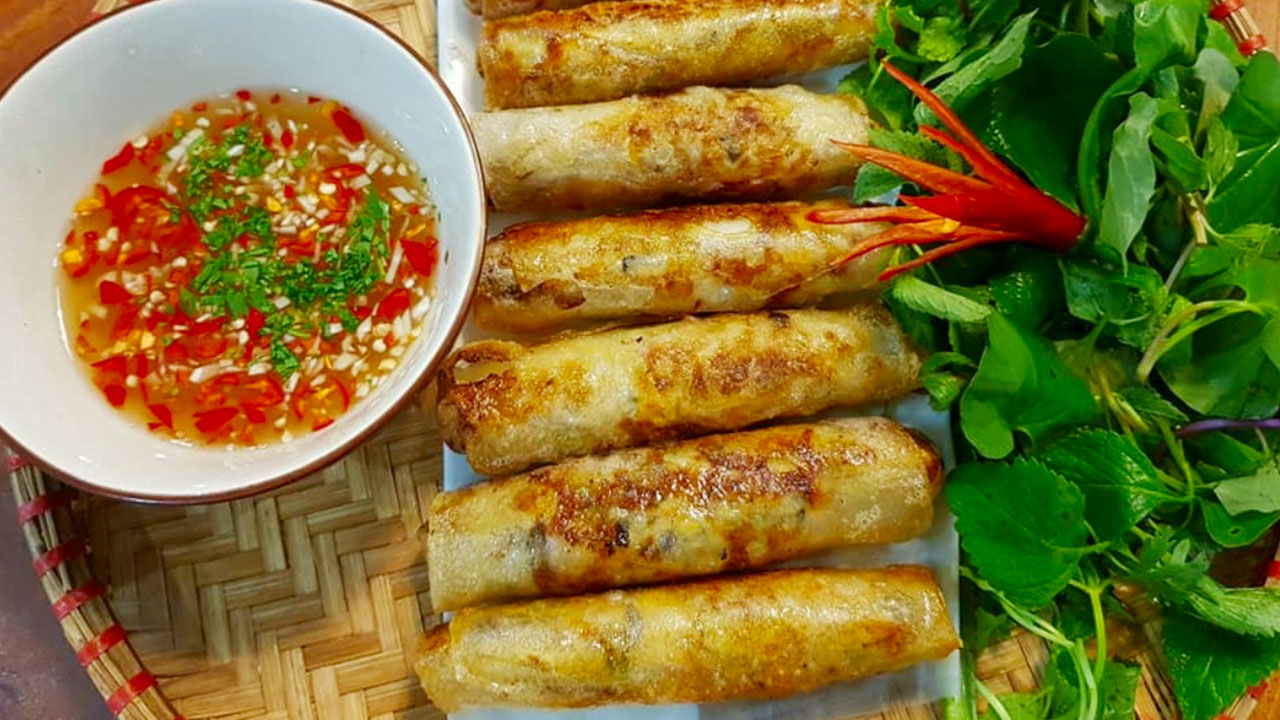
-
Dipping Sauces: A Flavorful Ensemble
- Vietnamese fried spring rolls are traditionally served with a variety of dipping sauces, each offering a unique flavor profile.
- Nuoc cham, a classic Vietnamese dipping sauce, is made from fish sauce, lime juice, sugar, and garlic.
- Sweet and sour sauce, with its tangy and sweet flavors, is another popular accompaniment.
-
Fresh Herbs and Vegetables
- Fresh herbs and vegetables play a vital role in enhancing the flavors of Hanoi spring rolls.
- Lettuce leaves, mint, cilantro, and basil are commonly used as wrappers for the spring rolls.
- These herbs add a refreshing touch and balance the richness of the filling.
-
Garnishes: A Visual Delight
- Garnishes like chopped peanuts, fried shallots, and pickled carrots add a visual appeal and extra crunch to the dish.
- These garnishes elevate the presentation of Vietnamese fried spring rolls, making them a feast for the eyes.
FAQs:
-
What is the difference between “cha gio” and “nem rán”?
- “Cha gio” and “nem rán” are two names for the same dish: Vietnamese fried spring rolls.
- “Cha gio” is the more common term in northern Vietnam, while “nem rán” is more prevalent in southern Vietnam.
-
Can I make Vietnamese fried spring rolls at home?
- Yes, Vietnamese fried spring rolls can be made at home with the right ingredients and techniques.
- However, it’s important to note that achieving the perfect crispiness and flavor may require practice.
-
What are some vegetarian alternatives to the traditional filling?
- There are several vegetarian alternatives to the traditional filling, such as using tofu, mushrooms, or vegetables like carrots and cabbage.
-
How can I store leftover Vietnamese fried spring rolls?
- Leftover Vietnamese fried spring rolls can be stored in an airtight container in the refrigerator for up to 3 days.
- To reheat, pan-fry them until crispy or bake them in an oven at 350°F (175°C) for 10-15 minutes.
-
What are some other popular Vietnamese dishes to try?
- Other popular Vietnamese dishes include pho (noodle soup), banh mi (Vietnamese baguette), goi cuon (fresh spring rolls), and bun cha (rice noodle dish with grilled pork).
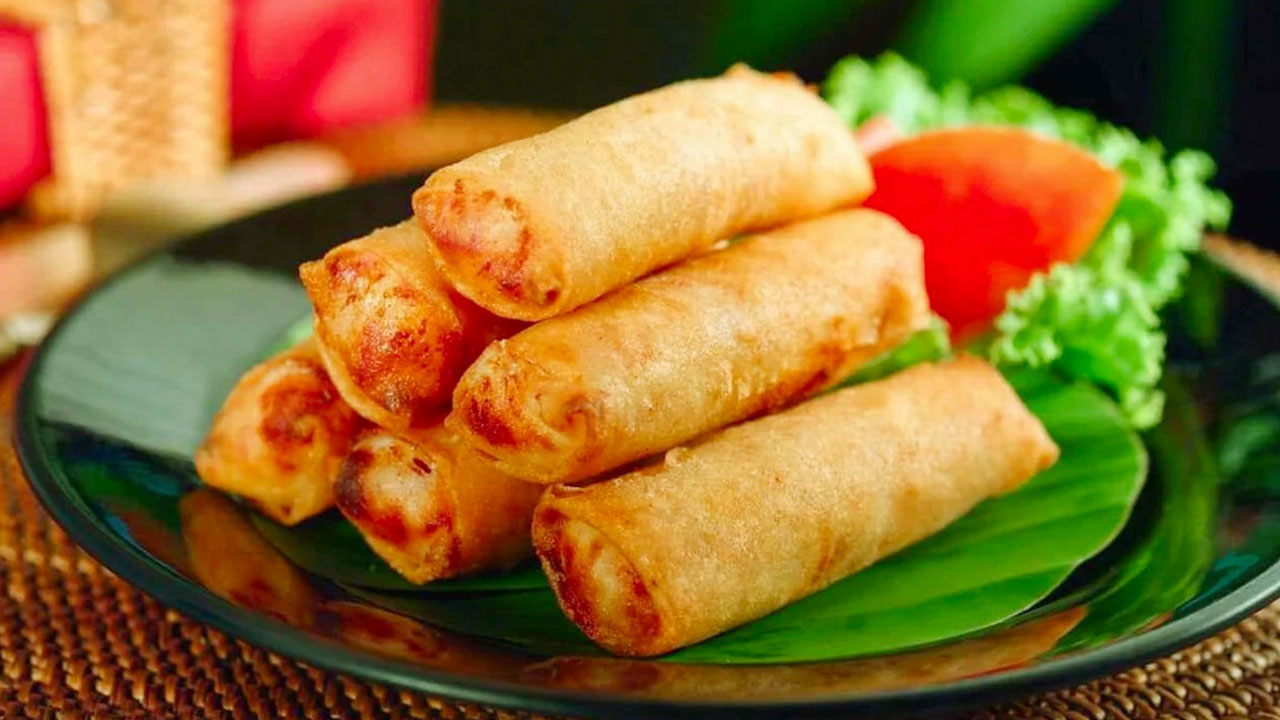
Conclusion:
Vietnamese fried spring rolls, with their crispy exteriors, savory fillings, and refreshing accompaniments, are a testament to the vibrant culinary heritage of Vietnam. Whether enjoyed as a snack, appetizer, or main course, these delectable rolls captivate taste buds and create lasting memories. The diverse flavors, textures, and techniques involved in making Vietnamese fried spring rolls reflect the creativity and passion of Vietnamese cuisine. As you embark on your culinary journey, experimenting with different ingredients and cooking methods, may your taste buds be delighted and your love for Vietnamese cuisine grow stronger.


